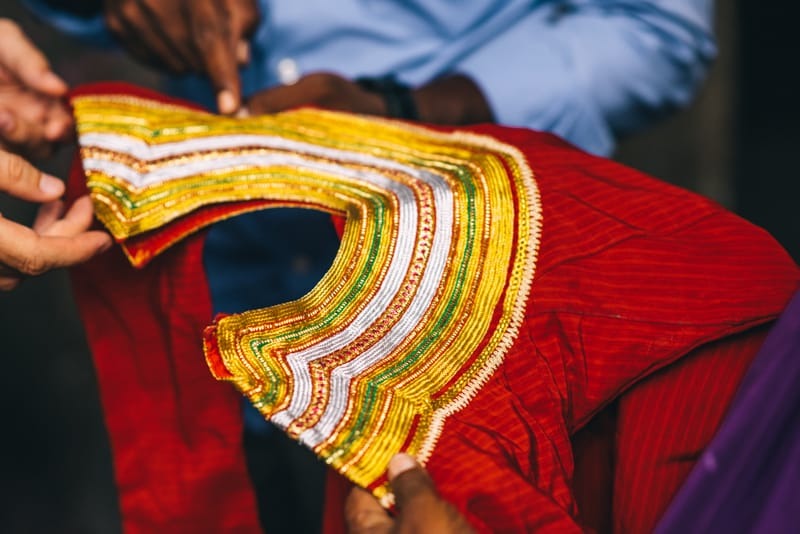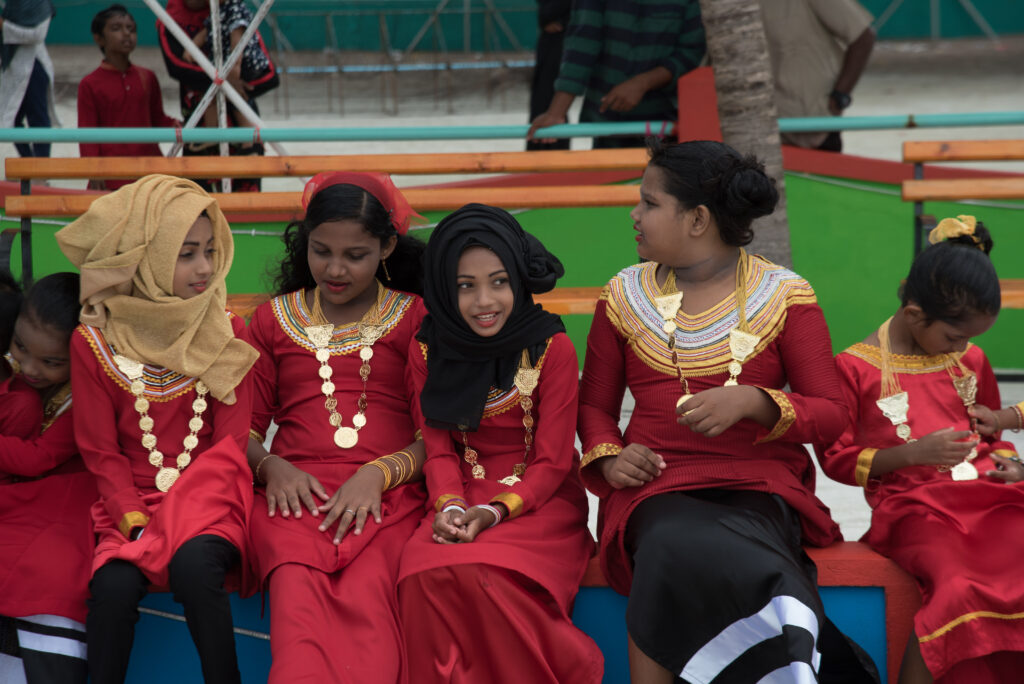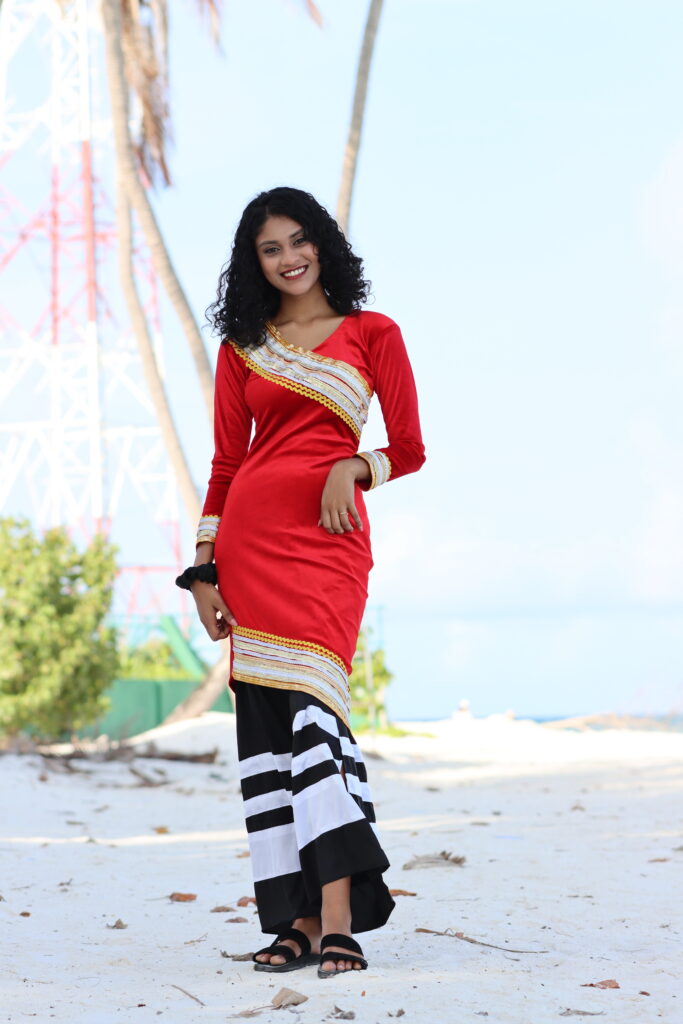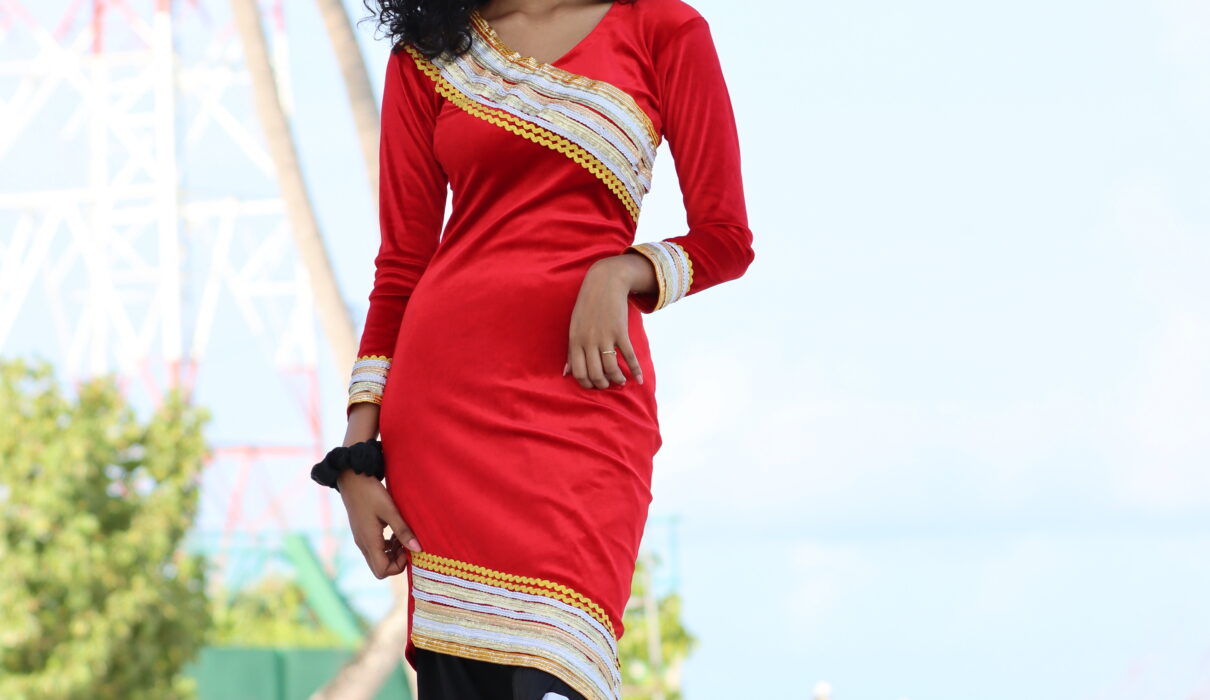The quintessentially traditional Maldivian women’s dress captivates attention, from its distinctive neckline to the luxurious silks and cotton fabrics used, down to the patterned underskirt and complementing jewelry. The term “Dhivehi Libaas,” when broken down, literally translates to Maldivian attire, with “Dhivehi” representing the locals and “libaas” signifying attire.

The origins of Dhivehi Libaas are hinted at in tales from wayfarers and documented photographs portraying the historical dressing of local women. However, the lived reality of modern times reflects a fading Maldivian culture influenced by Western and Eastern styles.
Crafted by local women, Dhivehi Libaas stands as a testament to how Maldivian women sought to portray themselves, embracing the essence of femininity through vibrant colors. While “libaas” simply means ‘dress,’ the Boavalhu Libaas specifically refers to a long-sleeved shirt with a wide neck, often adorned with white and gold Kasabu. The completed ensemble, known as Karufehi Libaas, is complemented by an underskirt called Feyli, typically patterned in black and white.
The origins of the Libaas style are shrouded in mystery, although historical accounts by stranded sailor Francois Pyrard from 400 years ago hint at a penchant for jewelry among the elite. Women, he described, adorned themselves heavily with gold and silver around the waist, neck, and ankles, signifying status.
Francois Pyrard also detailed that such accessories required special permission, often purchased from the king, and certain trends were even taxed.

Pyrard’s account of the women’s attire is vividly descriptive of how Maldivian women presented themselves. “As for the women, first of all they have a large colored cloth of cotton or silk, which covers them from the waist to the ankles, and serves as a petticoat. Above this they wear a robe of taffetas, or of very fine cotton, but very long, reaching to the feet, and with blue and white borders. To give a notion of its shape, I cannot better describe this robe than by comparing it to the chemises which the women wear here in France (Francois Pyrard de Laval, 1611).”
Pyrard’s historical account, along with descriptions of strict dress codes, suggests that the approved dress— the only Libaas allowed—remained relatively consistent for centuries.
In the year 1885, C.W. Rosett explored the Maldives, leaving behind a valuable collection of portraits that vividly depicted the diverse tapestry of Maldivian clothing. He described that the women donned a fabric, primarily of local origin, wrapped around their waist. This cloth, coarse in texture and of a deep chocolate hue, featured a border adorned with alternating black and white stripes, extending down to the ankles. On top of this, they wore a loose silk shirt or gown with short sleeves, reaching just above the knees. The openings for the neck and arms were embellished with embroidery, incorporating threads of gold, silver, and silk (Carl Wilhelm Rosett, 1887).
However, in the mid-twentieth century, Prime Minister/President Amin Didi introduced a new style, potentially aiming to accentuate the female figure or address wartime fabric scarcity. This innovation led to the ‘mother-hubbard’ style, seen commonly in the 60s and 70s but now reserved for official functions, worn by ministers and Majlis members. This second state-sanctioned style is aptly known as Faaskuri Hedhun, translating roughly as ‘approved dress.’

In contemporary society, traditional attire is no longer a prevalent choice. Women seldom don the traditional Dhivehi Libaas in their everyday lives, reserving its usage mainly for official or special occasions. Instead, women are drawn towards Western/Eastern fashion influences and modern burqas to express individual styles. However, the echoes of this cultural heritage endure in distant islands, narrations passed down by the elders, photographic memories, and not to forget, the imagery on the 100 Maldivian currency note.




